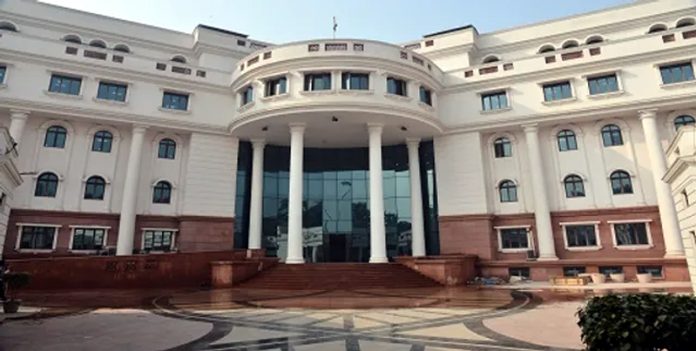Local administration, ASI begin exercise
Mohinder Verma
JAMMU, June 3: Several more historic monuments in the Union Territory of Ladakh are likely to be brought in the category of protected ones as the local administration and Archaeology Survey of India (ASI) have set into motion an exercise in this regard by submitting respective proposals to the competent authorities.
At present, there are only two State Protected Monuments that too in the Kargil district. They are Chamba statue in Sankoo area and rock sculpture of Matria Budha at Apati, which were brought in the category of protected ones vide SRO 261 dated March 16, 2012 and SRO 44 dated February 6, 2013 respectively.
Similarly, there are 15 monuments which are Centrally protected and taken care of by Archaeology Survey of India. These include sculptures at Drass, rock cut sculptures in Mulbeg area (both in Kargil district) and Buddhist Monastery Lamayuru, Buddhist Monastery at Lakir and Buddhist Monastery at Alchi (all in Khaltsi area), Buddhist Gompa at Phyang, ancient palace in Leh, Old Castle (Tsemo Hill) in Leh, Stupa in Tisseruu Leh, ancient palace and shrine in Shey, Hemis Gompa in Hemis, ancient Gompa in Thiksey and shrine of four Lords, Gonkhang in Leh.
Official sources told EXCELSIOR that Department of Archives of Union Territory of Ladakh has submitted a proposal to the competent authority for declaration of Chiktan Fort and rock carvings in Sankoo block of Kargil as State Protected Monuments.
Follow the Daily Excelsior channel on WhatsApp
“Built in the 16th century by Balti craftsmen, the Chiktan Fort served as a royal residence for centuries despite shifts in rulers as the region was amalgamated with neighboring kingdoms. Chiktan Fort is composed of rammed earth and stone masonry with mud mortar”, they said, adding “though the fort stands in ruins today, it still attracts visitors who love the spectacular views of snow-capped mountains that form the backdrop”.
They further said, “Chiktan Fort is shrouded in many mysteries. Legends of its making, numerous sinister and violent events, magical tales of wondrous creations and a heart-wrenching tailspin of destruction and apathy encompass the story of this fabulous fort set in an almost fantastical location”.
About the stone carvings in Sankoo, sources said, “stone carving is an ancient art form that has thrived in Ladakh for centuries. The artists skillfully chisel away at stones, creating intricate patterns, religious symbols and architectural embellishments”. The administration of Ladakh wants to protect these carvings by bringing them in the list of State Protected Monuments, they added.
Sources further informed that even the Archaeological Survey of India (ASI) has prepared a proposal for declaration of six more monuments as Centrally Protected and the same will be forwarded to the concerned Ministry at the Government of India shortly.
“Some of these monuments are in Nubra and others in the periphery of Leh town”, sources said while disclosing that mostly these are rock carvings, which ASI wants to bring under its control for conservation purpose.
“If the proposal of the local officers of the ASI is accepted by the competent authority in the Government of India then further exercise, which is considered as lengthy, will begin. Even objections and suggestions are invited from the people of the area where the monuments are situated and after considering the views/objections received within the stipulated period, Union Government declares the ancient monument to be of national importance by publishing a notification in the official gazette”, sources said quoting the procedure.
“Similar procedure is also followed in respect of State Protected monuments but comparatively the exercise is not that lengthy especially when Ladakh is having its own Department of Culture”, sources said in response to a question, adding “Ladakh is very rich in ancient monuments and cultural heritages as such there is dire need to protect them, which is possible only when they are declared protected ones so that proper conservation works are initiated”.


